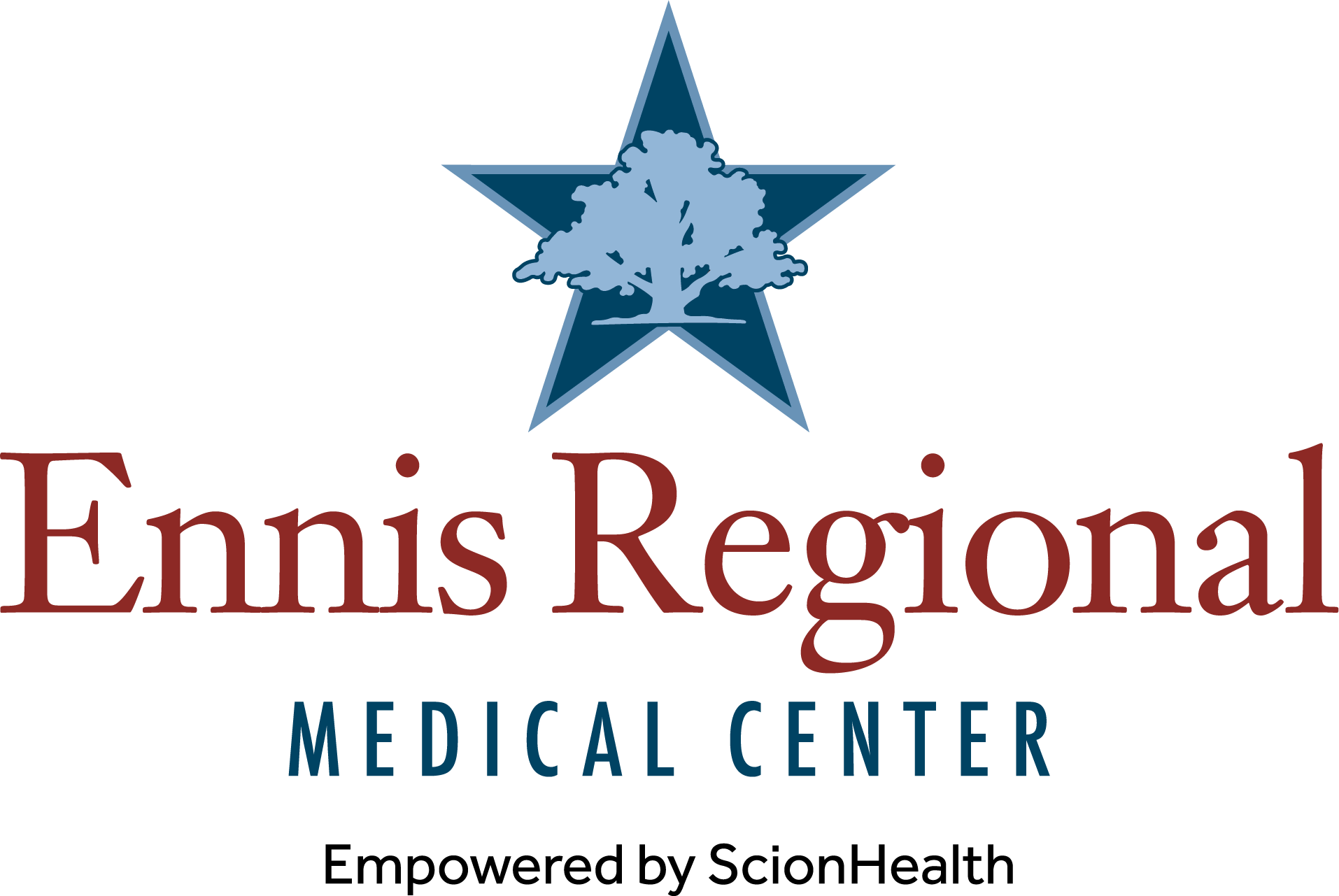Coronavirus (COVID-19) Preparedness Information
Our hospital is committed to providing the highest quality care and ensuring the safety of our patients, employees, providers, volunteers and visitors. We are continuing to monitor the evolving situation with the coronavirus (COVID-19) and are taking the necessary steps to ensure we are fully prepared to care for patients, in accordance with guidance from the Centers for Disease Control and Prevention (CDC) and in partnership with our local and state health departments.
Below are a number of resources to help educate you and your family on COVID-19. For more information on the virus, please contact the health department.
COVID-19 Online Risk Assessment
To help support the health of our community, we are providing access to an online COVID-19 risk assessment developed by the Centers for Disease Control and Prevention (CDC). This tool does NOT provide a diagnosis, and it should NOT be used as a substitute for an assessment made by a healthcare provider.
Quick Links:
- Centers for Disease Control and Prevention (https://www.cdc.gov/)
- Local/state health department (https://dshs.texas.gov/coronavirus/public.aspx)
- Local emergency management association (https://www.co.ellis.tx.us/94/Emergency-Management)
- State hospital association (https://www.tha.org/)
Additional Resources:
Ennis Regional Medical Center is committed to providing the highest quality care and ensuring the safety of our patients, employees, providers, volunteers and visitors. We are continuing to work closely with Texas Department State Health Services and following guidance from the Centers for Disease Control and Prevention (CDC) to ensure our hospital is prepared with the appropriate plans to detect, protect and respond should anyone in our community contract or be exposed to the novel coronavirus (COVID–19). Additionally, we are reviewing our facility’s robust emergency operations plan and proactively completing a number of preparation checklists out of an abundance of caution.
Ennis Regional Medical Center has taken the following measures to prepare, in accordance with CDC guidelines:
- Patients in the Emergency Department and inpatient units are screened based on their recent travel history.
- Personal protective equipment is available, including face masks and eye protection, for example.
- Hand hygiene products are easily accessible throughout the facility.
Importantly, all of the above are standard operating protocols that are in place year-round to help ensure the health and well-being of everyone who enters our hospital.
We want to assure our community that our providers and clinical teams are well-trained and prepared to manage outbreaks of viruses and infectious diseases, including the coronavirus. For more information, contact the Texas Department of State Health Services or visit the Centers for Disease Control and Prevention website at www.cdc.gov.
Visitor Policy Update!
-
Visiting hours are from 7 a.m. - 7 p.m.
-
Visitors must enter through the main lobby or ER entrance. Visitors must acknowledge their temperature, any signs or symptoms of COVID-19, and if they have had any exposure to COVID-19. If a visitor does not meet the screening criteria, they will be asked to leave and not return until meeting screening criteria.
-
Masks must be worn at all times while in the facility. Please bring a mask or cloth face covering with you when you come to visit.
-
Upon entry, please use hand sanitize on your hands and continue to clean your hands frequently while visiting the facility.
-
Visitors should remain in the patient's room while they are in the facility.
-
To help keep everyone informed about the patient’s status and planned care, we ask that the patient’s designated visitor be the communicator for the rest of the family and friends.
-
Patients in outpatient procedure areas are permitted to have one visitor.
-
Patients in inpatient areas may have 2 visitors.
-
Patients in ED may have 2 visitors. Visitation may be altered at the discretion of the ED staff to monitor traffic, maintain a safe environment, and to provide patient privacy.
-
Patients that are confirmed positive or suspected to have COVID-19 are permitted to designate 1 visitor for the duration of their in-hospital stay to visit during posted visiting hours. The visitor must follow infection control and safety requirements including:
- Wear hospital issued gown, gloves, eye shield, and facemask at all times while in the patient room.
- Exit the building immediately upon leaving the patient room
- Refrain from visiting during and immediately after aerosol generating procedures
Please Note:
The visitor policy is subject to change at any time as the situation with COVID-19 continues to evolve in our region. When official changes to the policy are made, these will be communicated to our patients and the public.
Robert Rupp, CEO, Addresses the Community of Ennis.
Ennis Regional Medical Center is committed to providing high quality care and protecting the health and safety of you, your family/loved ones and our community. Throughout the COVID-19 pandemic, we have been carefully following federal and state guidance, monitoring the prevalence of the disease in our community, and carefully evaluating our supplies and resources, including personal protective equipment (PPE). Our hospital is clean, our team is prepared and we are ready to care for you.
Your health is important, and we are proud to be able to provide the full scope of care you need in a way that continues to support our COVID-19 response and supply conservation efforts. In addition to the enclosed pre-operative materials, please review the Frequently Asked Questions (attached to this page) for a list of things you should know about our facility and what you should expect when you are here for your procedure. If you have questions or concerns about what your time with us will look like amidst our current situation with COVID-19, that is understandable and expected. We hope the FAQs we have put together will provide you the answers you’re seeking.
While the experience may be a little different than when you may have been with us before, we hope you will take comfort in knowing that you will receive the same safe, high quality and compassionate care you have come to expect from ERMC -- with additional safeguards in place. If you have any questions or need any additional information, please call our team at 855.875.ERMC (3762).
Thank you for entrusting us with your care. It is our privilege to serve you.
Infection Prevention Tips
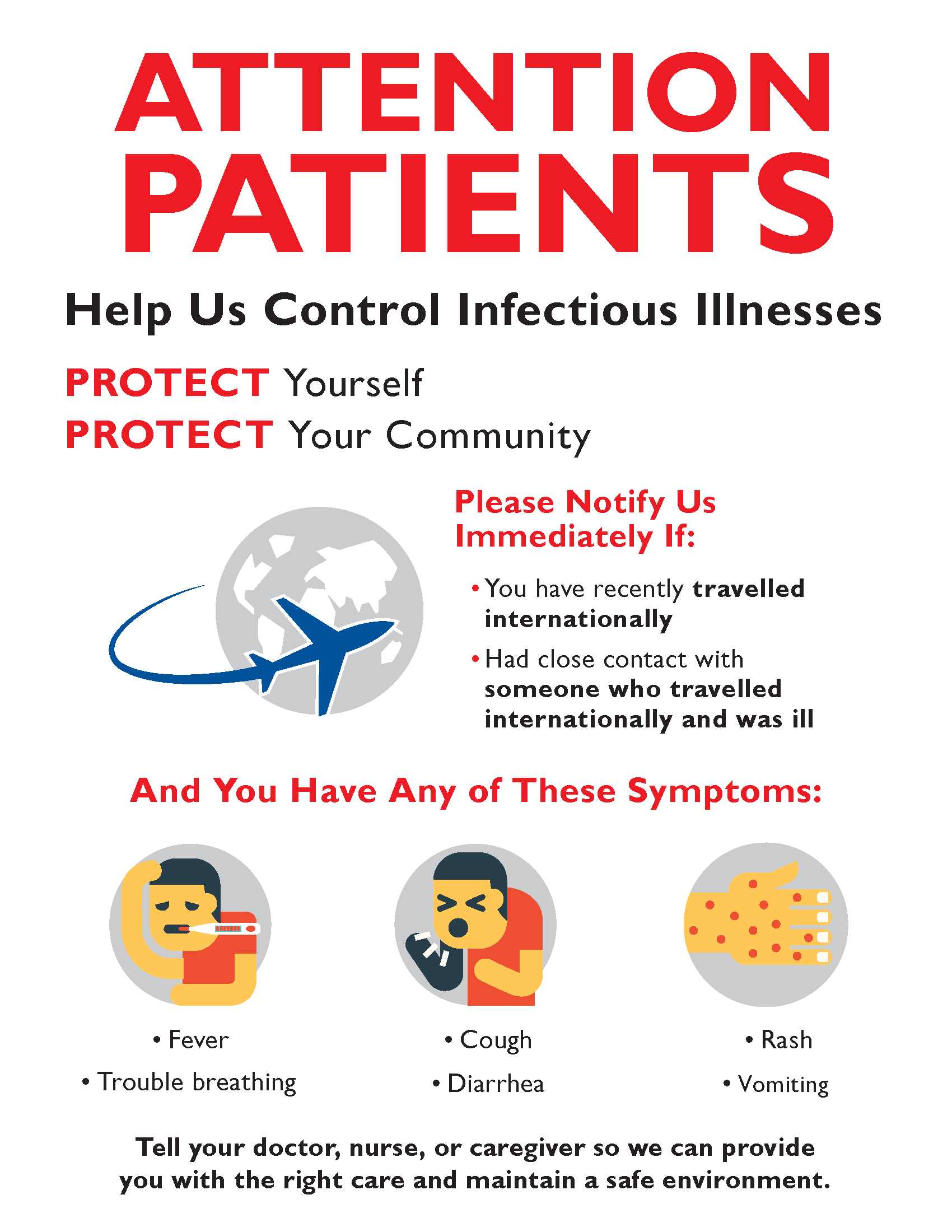
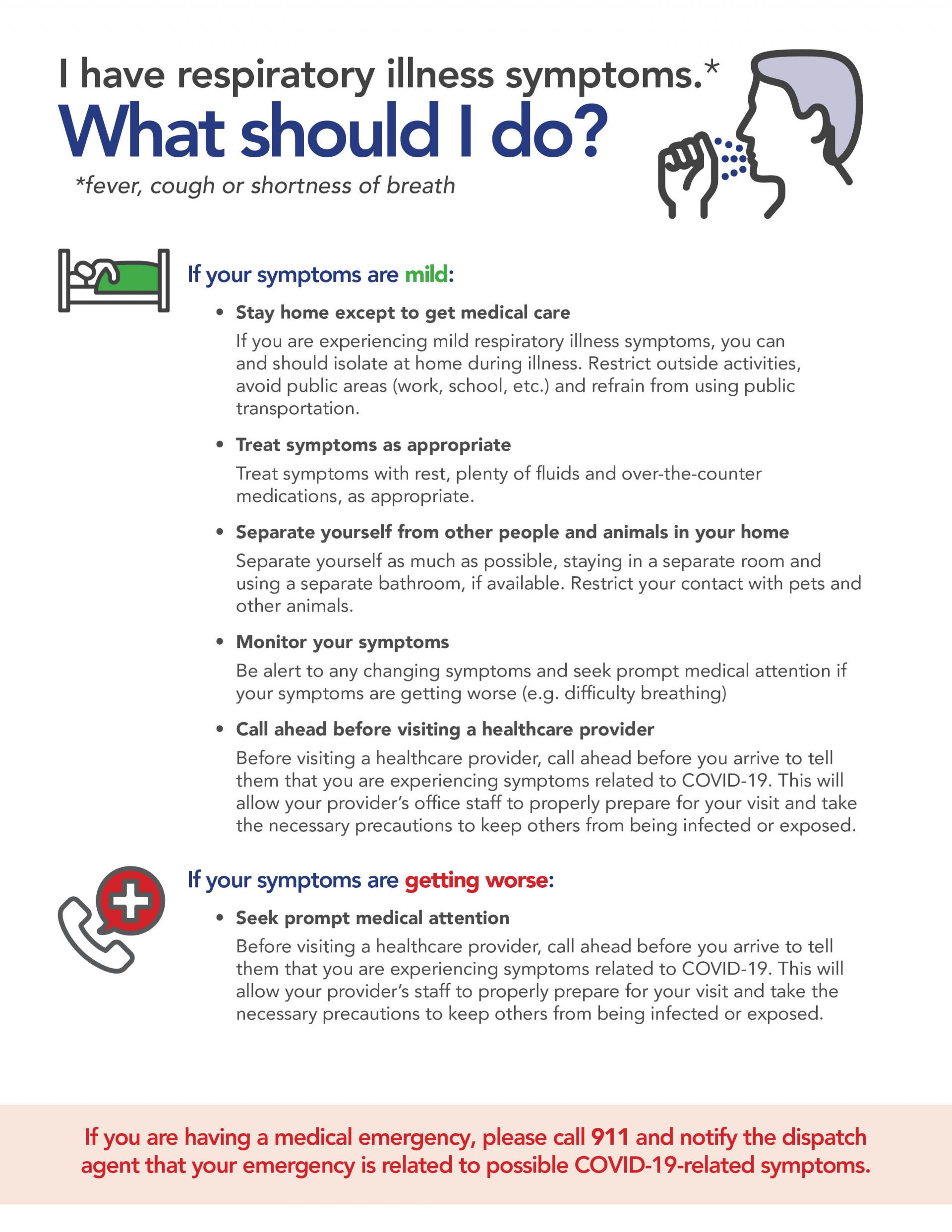
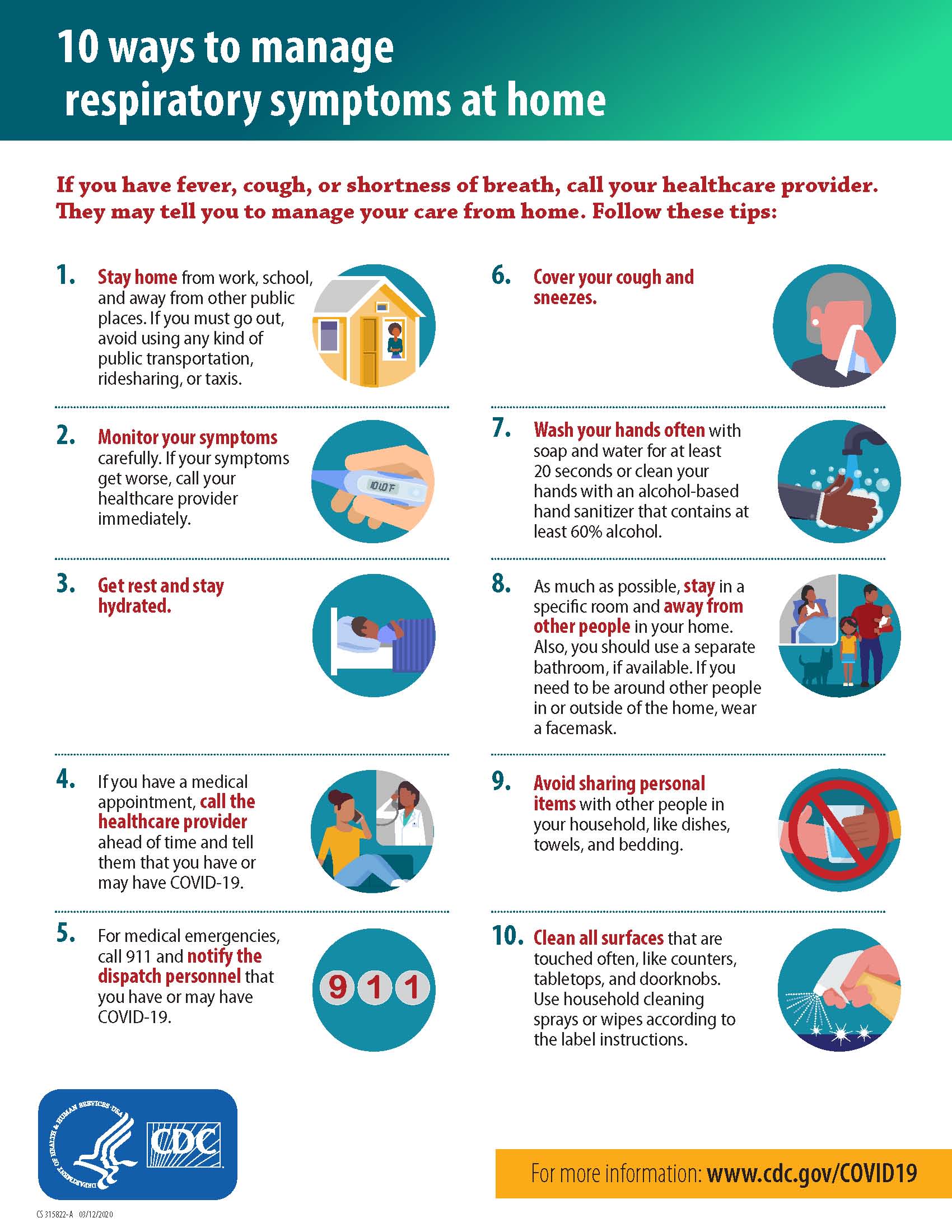
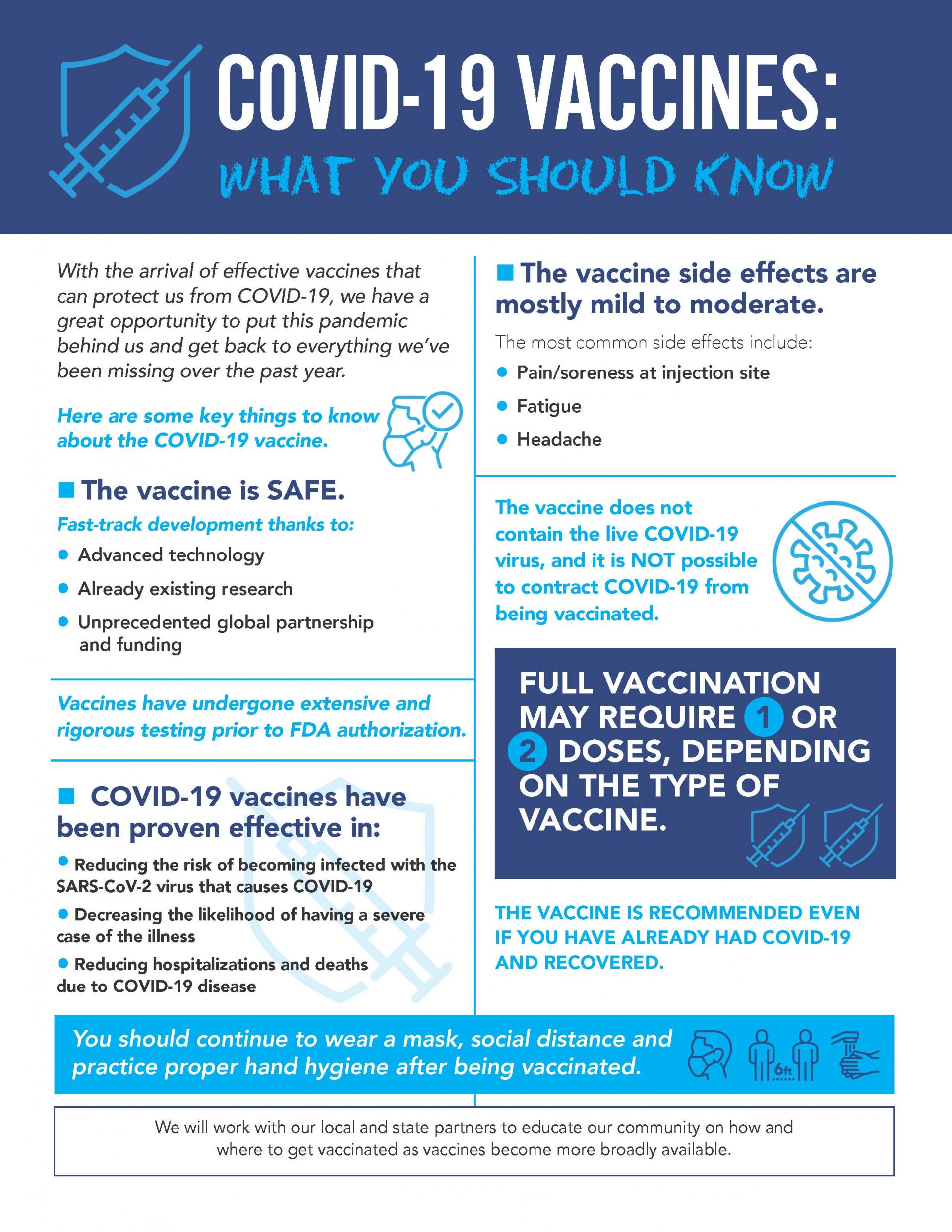
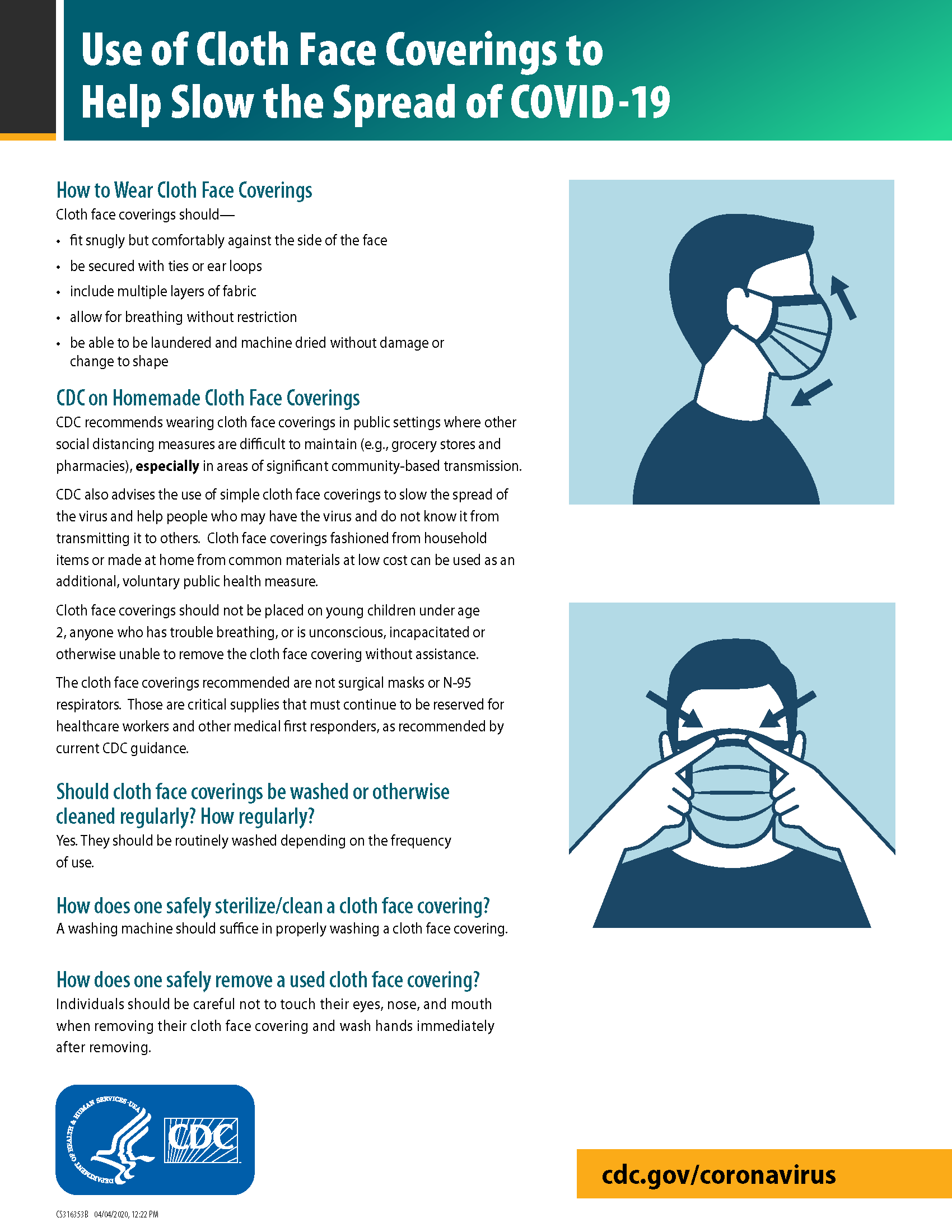
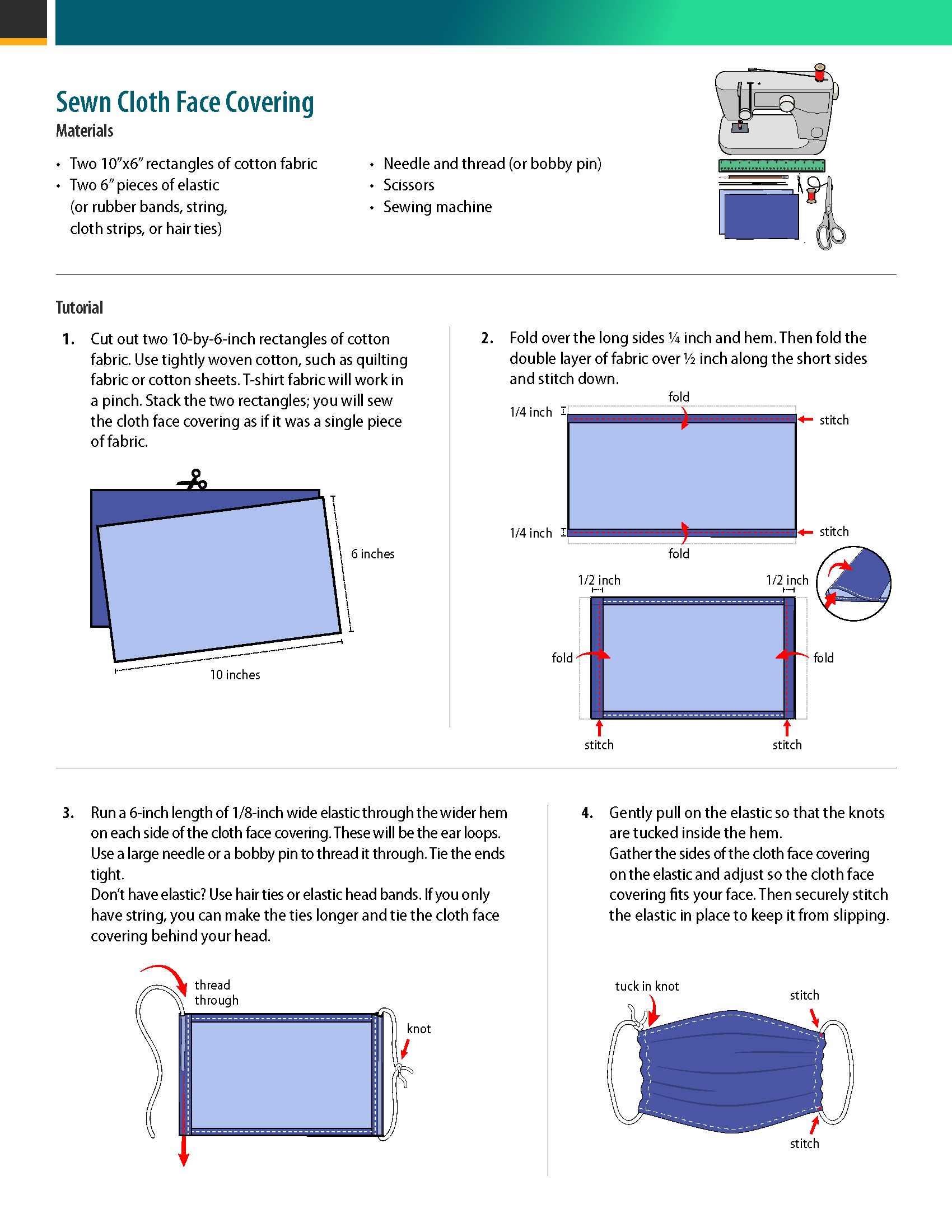
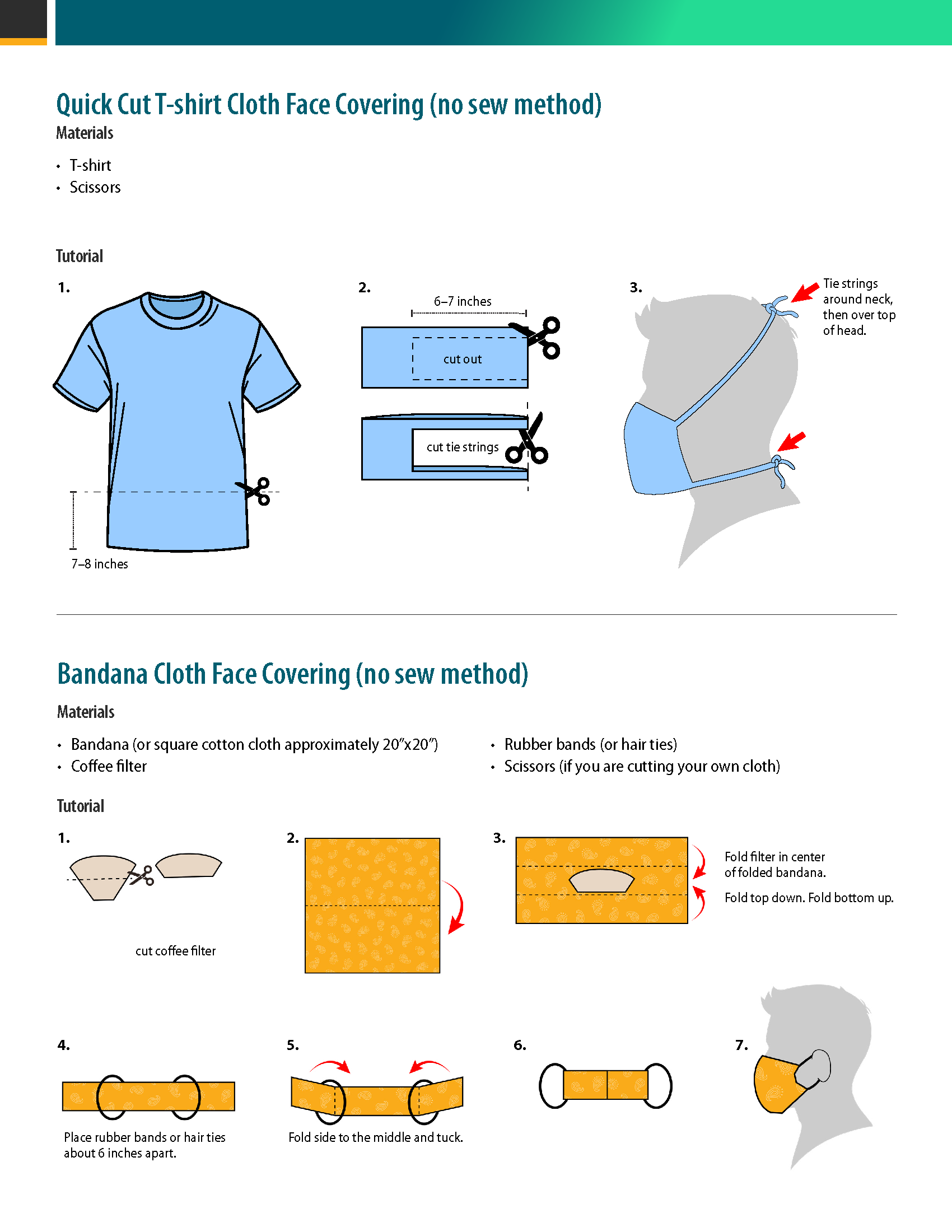
Hygiene Reminders from the CDC
Handwashing is one of the best ways to protect yourself and your family from getting sick. Learn when and how you should wash your hands to stay healthy.
Wash Your Hands Often to Stay Healthy
You can help yourself and your loved ones stay healthy by washing your hands often, especially during these key times when you are likely to get and spread germs:
- Before, during, and after preparing food
- Before eating food
- Before and after caring for someone at home who is sick with vomiting or diarrhea
- Before and after treating a cut or wound
- After using the toilet
- After changing diapers or cleaning up a child who has used the toilet
- After blowing your nose, coughing, or sneezing
- After touching an animal, animal feed, or animal waste
- After handling pet food or pet treats
- After touching garbage
Follow Five Steps to Wash Your Hands the Right Way
Washing your hands is easy, and it’s one of the most effective ways to prevent the spread of germs. Clean hands can stop germs from spreading from one person to another and throughout an entire community—from your home and workplace to childcare facilities and hospitals.
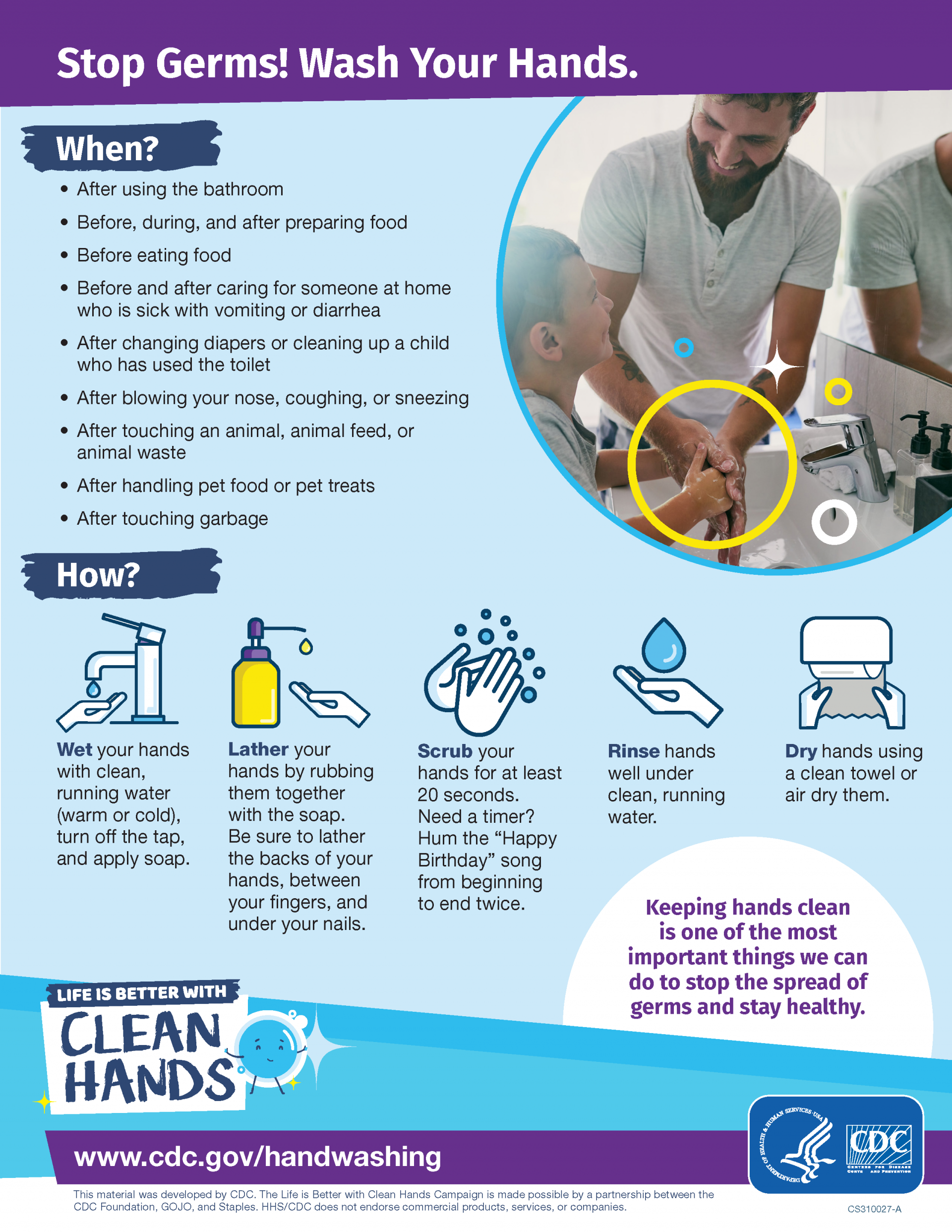
Follow these five steps every time.
- Wet your hands with clean, running water (warm or cold), turn off the tap, and apply soap.
- Lather your hands by rubbing them together with the soap. Lather the backs of your hands, between your fingers, and under your nails.
- Scrub your hands for at least 20 seconds. Need a timer? Hum the “Happy Birthday” song from beginning to end twice.
- Rinse your hands well under clean, running water.
- Dry your hands using a clean towel or air dry them.
Why? Read the science behind the recommendations.
Use Hand Sanitizer When You Can’t Use Soap and Water
You can use an alcohol-based hand sanitizer that contains at least 60% alcohol if soap and water are not available.
Washing hands with soap and water is the best way to get rid of germs in most situations. If soap and water are not readily available, you can use an alcohol-based hand sanitizer that contains at least 60% alcohol. You can tell if the sanitizer contains at least 60% alcohol by looking at the product label.
Sanitizers can quickly reduce the number of germs on hands in many situations. However,
- Sanitizers do not get rid of all types of germs.
- Hand sanitizers may not be as effective when hands are visibly dirty or greasy.
- Hand sanitizers might not remove harmful chemicals from hands like pesticides and heavy metals.
Caution! Swallowing alcohol-based hand sanitizers can cause alcohol poisoning if more than a couple of mouthfuls are swallowed. Keep it out of reach of young children and supervise their use. Learn more here.
How to use hand sanitizer
- Apply the gel product to the palm of one hand (read the label to learn the correct amount).
- Rub your hands together.
- Rub the gel over all the surfaces of your hands and fingers until your hands are dry. This should take around 20 seconds.
For more information, visit the CDC website.
